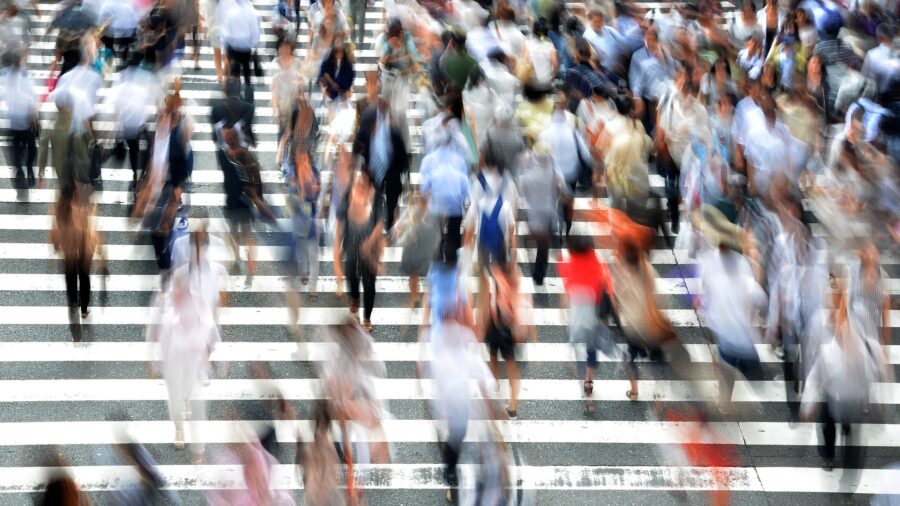A recent US study found turning SUVs, pickups and vans are far more likely than turning cars to hit pedestrians and kill them. In August 2022, there were 11 SUVs and 4 utes in the Australian top 20 of new car sales. Does this mean it’s becoming more dangerous to be a pedestrian?
Larger vehicles may block your vision
Researchers at IIHS (a US road safety body) found SUVs, pickups (utes) and vans are far more likely than cars to hit pedestrians, while turning at intersections. They concluded that this type of vehicle design could compromise visibility.
This study found:
- The odds of killing a crossing pedestrian while turning left* were twice as high for SUVs, nearly 3 times as high for vans and nearly 4 times as high for pickups (utes) as they were for cars.
- The odds of killing a crossing pedestrian while turning right* were 89% higher for pickups (utes) and 63% higher for SUVs than for cars.
- Turning crashes made up 900 of 5,800 (16%) fatal pedestrian crashes in 2014-18.
*As US motorists drive on the right, these results need to be converted to Australian conditions. A left turn in the US, for example, is like a right turn in Australia.
These vehicles are more likely to cause injury from their shape than from their extra weight. SUVs, for example, are shaped very differently from passenger cars. They have high ride heights and blunt front ends. They also need stronger A-pillars to protect occupants in rollovers. (A-pillars are struts connecting the roof to the vehicle’s body on each side of the windscreen.)
IIHS says the design of larger vehicles may need to be addressed. In the US, unlike Australia, there are no regulatory requirements to address vehicle design for protecting vulnerable road users.
Are more pedestrians dying or being injured?
Nearly 6,500 pedestrians died in road crashes in the US, up 59% since 2009 and rising every year.
This is not the case in Australia:
- Pedestrian deaths have fallen every year since 2018, average trend is down 9.2%
- In NSW, pedestrian deaths in the year to Feb 2022 were down 28.8% from the 2019-2021 average.
However, the pattern for serious injuries is more negative:
- Pedestrian injuries since 2011 have fallen only 3.4% and are 4% higher than the 2014 low of 2,562.
- In NSW, pedestrian injuries have reduced every year during 2011-2020, except in 2019.
It appears Australian pedestrians are not as endangered as Americans by the obvious increase in large vehicles on the roads. However, Australian pedestrians still have too high a chance of serious injury in collision with a vehicle.
Large vehicles are more “aggressive”
Analysis of Monash data from safety tests and crash records suggests our preference for large and small SUVs and utes may compromise road safety. This is mainly because of the high Aggressivity of these vehicles (not the drivers).
An Aggressivity rating is the vehicle’s risk of causing death or serious injury to other drivers, pedestrians, or motorcyclists. Monash found SUV size matters:
- Medium and large SUVs and commercial utes protect occupants as much as passenger cars.
- Small SUVs are worse for occupants than small cars and overly aggressive towards other road users.
- Large SUVs and utes are particularly aggressive because they are constructed to be tough – but are too tough on other road users.
ANCAP (the Australian safety body) evaluates vehicles against three main areas: Adult and Child Occupant Protection, Safety Assist (safety technologies) and Vulnerable Road User Protection.
What is good protection for pedestrians?
An assessment of Vulnerable Road User Protection includes:
- Design of the front of the vehicle to minimise injury risk to a struck pedestrian.
- The vehicle’s ability to actively avoid or mitigate impacts with pedestrians.
- How well Autonomous Emergency Braking works, which is critical for a 5-star rating.
While local SUV sales have been robust for some time, Australians tend not to drive the very large SUVs and utes popular in the US. ANCAP says many of our SUVs and utes, such as Mazda CX-9, Toyota Hilux, Holden Colorado and Trailblazer, achieve good levels of pedestrian protection.
If you own a vehicle with a good safety rating, this will favourably affect the price of your green slip.


your opinion matters: